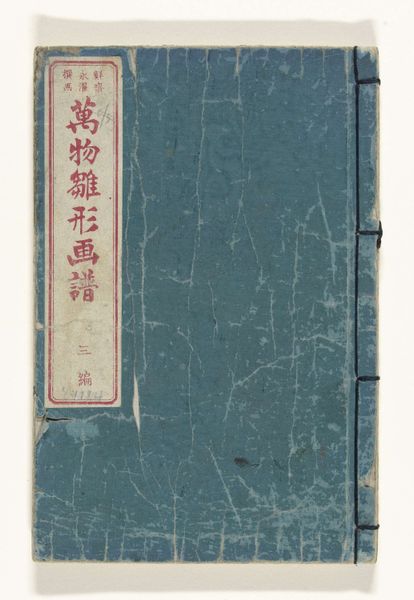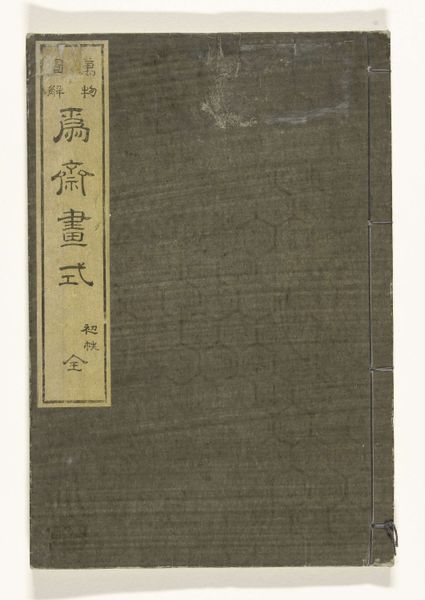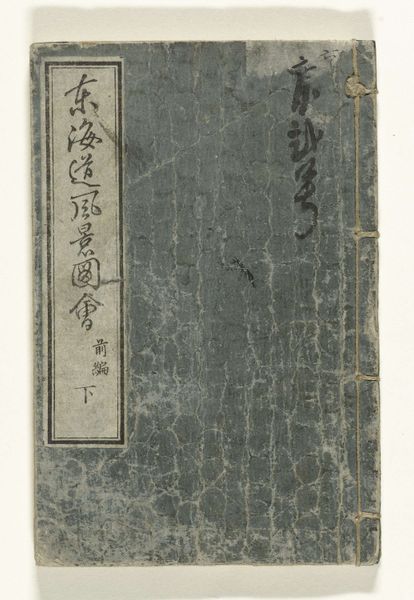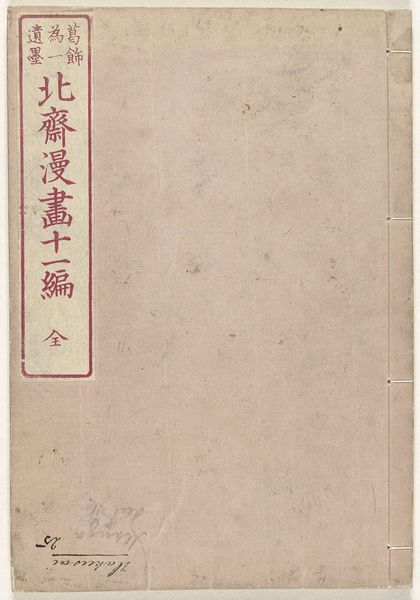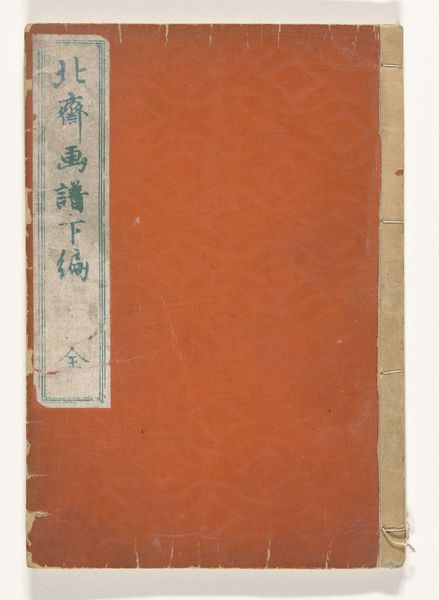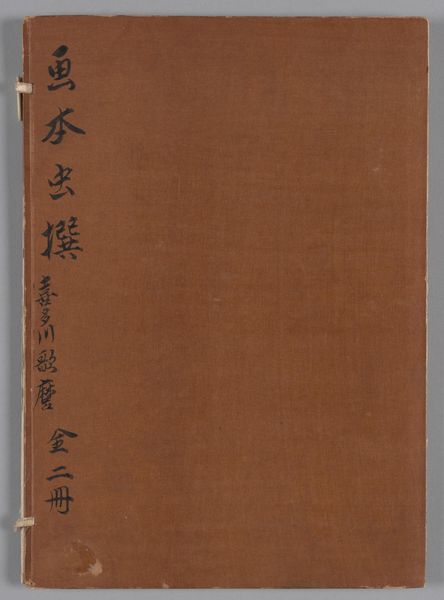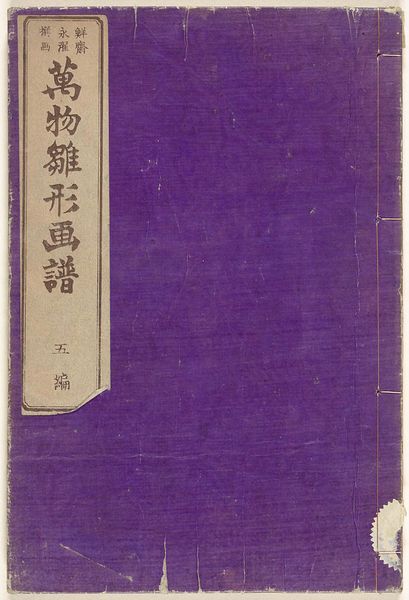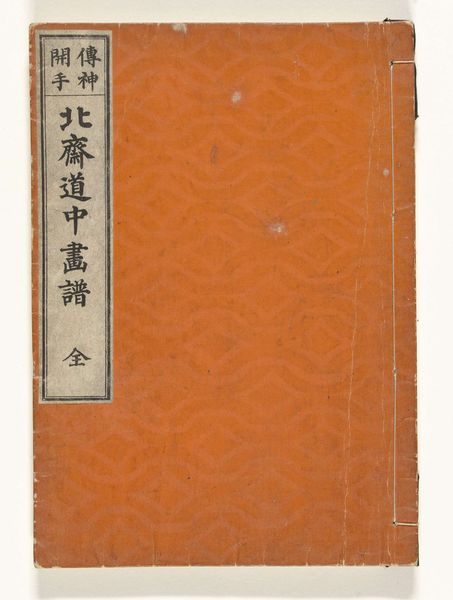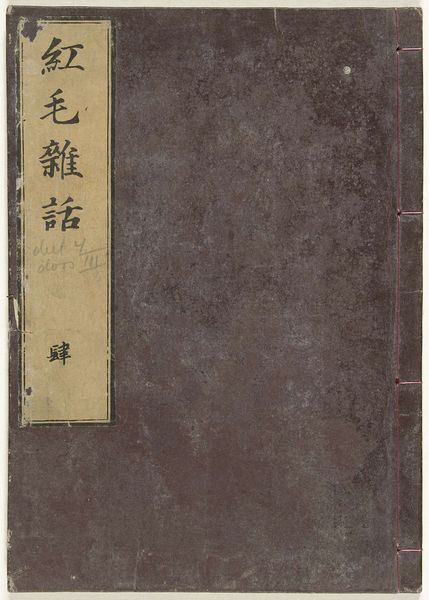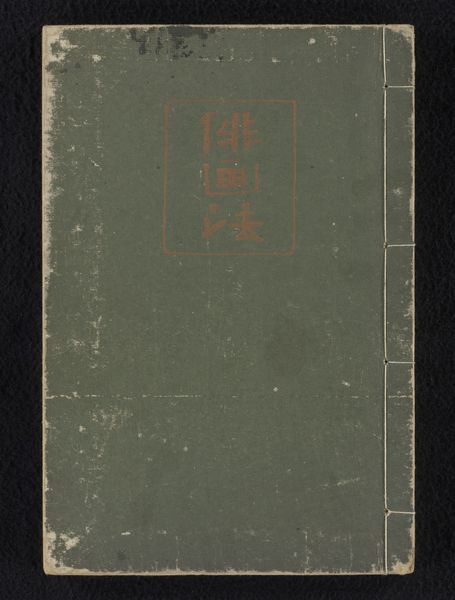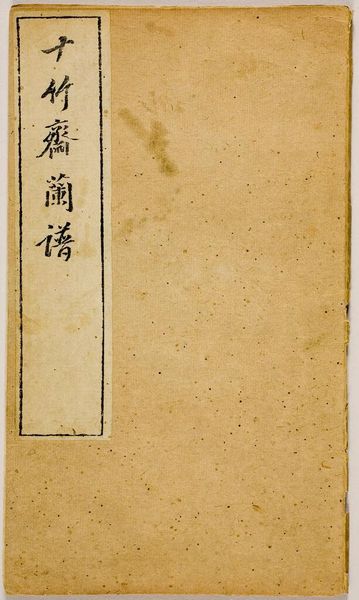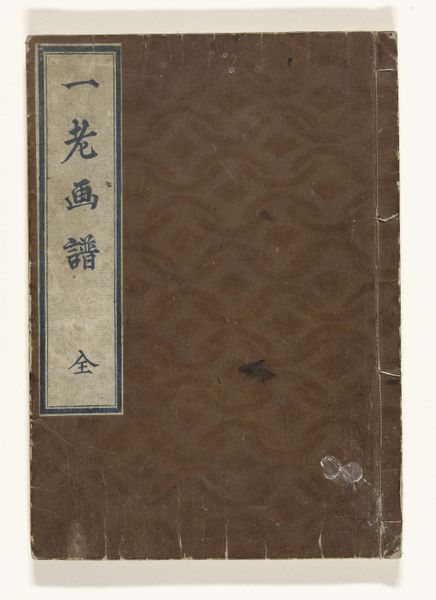
print, paper, woodblock-print
# print
#
asian-art
#
ukiyo-e
#
paper
#
woodblock-print
Dimensions: height 210 mm, width 150 mm
Copyright: Rijks Museum: Open Domain
Editor: So, here we have what looks like the cover of "Zee van snaarinstrumenten", created in 1788 by Kitao Shigemasa. It’s a woodblock print on paper. At first glance, the brown tones give it a very aged, almost solemn feel. What's your take on this as a piece reflecting its time? Curator: It's interesting to consider this print within the socio-political context of late 18th century Japan. Ukiyo-e, as a genre, was intimately connected with the burgeoning merchant class and their pursuit of pleasure and entertainment. This image, given its title, might depict musicians. Can you tell if it portrays actors, courtesans, or commoners playing music? Because their status and role affected how society valued it. Editor: I’m struggling to tell from just the cover; the details are so minimal! Curator: Exactly! What is included—and what is left out— becomes really significant. Consider how the medium of woodblock print itself democratized art. It allowed for wider circulation, influencing taste and even potentially shaping social discourse. Editor: So the very *making* of it was kind of political? Curator: In a way, yes. It made art accessible beyond the elite circles. What are your thoughts on its relationship with modern book cover design, which arguably still functions within a democratic commercialized system? Editor: I hadn't considered that connection, but it’s actually striking! Book covers serve a similar function today, don't they? Acting as visual gateways… Maybe even subtly influencing our own social narratives! Thanks, that gave me a lot to reflect on! Curator: Likewise, it is these contextual linkages that enrich our comprehension and elevate simple observation into societal commentary.
Comments
No comments
Be the first to comment and join the conversation on the ultimate creative platform.

